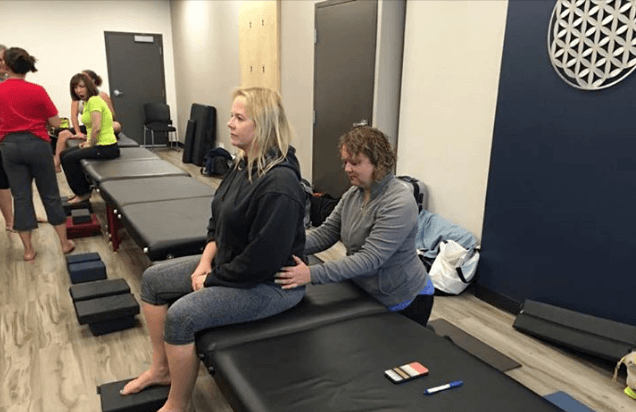Since 2016, the Centers for Disease Control and Prevention (CDC) and European guidelines have recommended manual therapy as first- line treatment for MSK ill-health. Manual therapy is an approach where Practitioners of Manual Therapy (PoMT) use hands-on data acquisition and analysis (HODA-A) as a measurement instrument for research, diagnosis, prognosis, and a tool for treatment. Yet manual therapy techniques fail all reliability studies, therefore without proof that hands-on is a valid and reliable method of data collection, this very much limits the conclusions that can be drawn from using the hands in MSK healthcare.
INTRODUCTION
HYPOTHESIS
Conducting an interview with the testers post experiment will help to explain the reasons for the poor inter-tester and inter-modality discrepancies.
RECRUITMENT
Twenty-three healthy volunteers with recognised manual therapy qualifications (one man aged 36 years and 22 women aged 39.5 ± 9.4 years) were recruited within manual therapy learning institute. Of the volunteers, six women aged 46 ± 8.6 years with 18 ± 9.5 years’ experience were the randomly allocated to be tester’s.

All testers, from previous experiments 1 and 2, were asked to complete the final experiment by themselves, with no control of their HODA-A constructs, to test the testee’s seated pelvic rotation and provide the relative position of the left and right innominates. The tester knelt behind the seated testee with their knees flexed to 90 degrees, eyes open, hips extended, and arms reached forward. Blinded to other testers, the tester completed, and submitted, a data ticket. The testers then moved to the next testee. There was no true result for this experiment. There was one round of testing.

Prior to any data collection, the examiner set-up each testee in all studies to meet the specific criteria that had evolved from preceding experiments. A reflective journal was kept by the examiner noting observations from the testee’s and testers during each experiment. This reflection prevented any impaired memories when recalling the experience over a longer time frame (Almeida, 2005). The examiner oversaw all experiments, journaled any events that may be of interest, and analysed the final data submitted by the tester’s.

This experiment focused on giving the tester’s back their HODA-A (with no control) as applied in clinical practice, to provide testers with a reflective opportunity in preparation for the interview. This experiment provided the opportunity to learn about tester’s experiences when two measurement theories were allowed to inform data being gathered during a manual MSK assessment. For this reason, no quantitative data was explored.
Conclusion
For increased HODA-A performance, testers are required to use both observation-based methods and palpatory-based methods simultaneously, thus ensuring sensorimotor integration occurs. However, when observation- based and palpatory-based methods are used simultaneously, the question of reliability within each testers five HODA-A constructs, during a manual MSK assessment, remains unknown. Further experiments shall begin to explore each of HODA-A’s five constructs and controlling or allowing known confounders, and further studies shall continue to interview testers post experiment due to the data rich level of understanding that was reached.



0 responses on "STUDY 3"